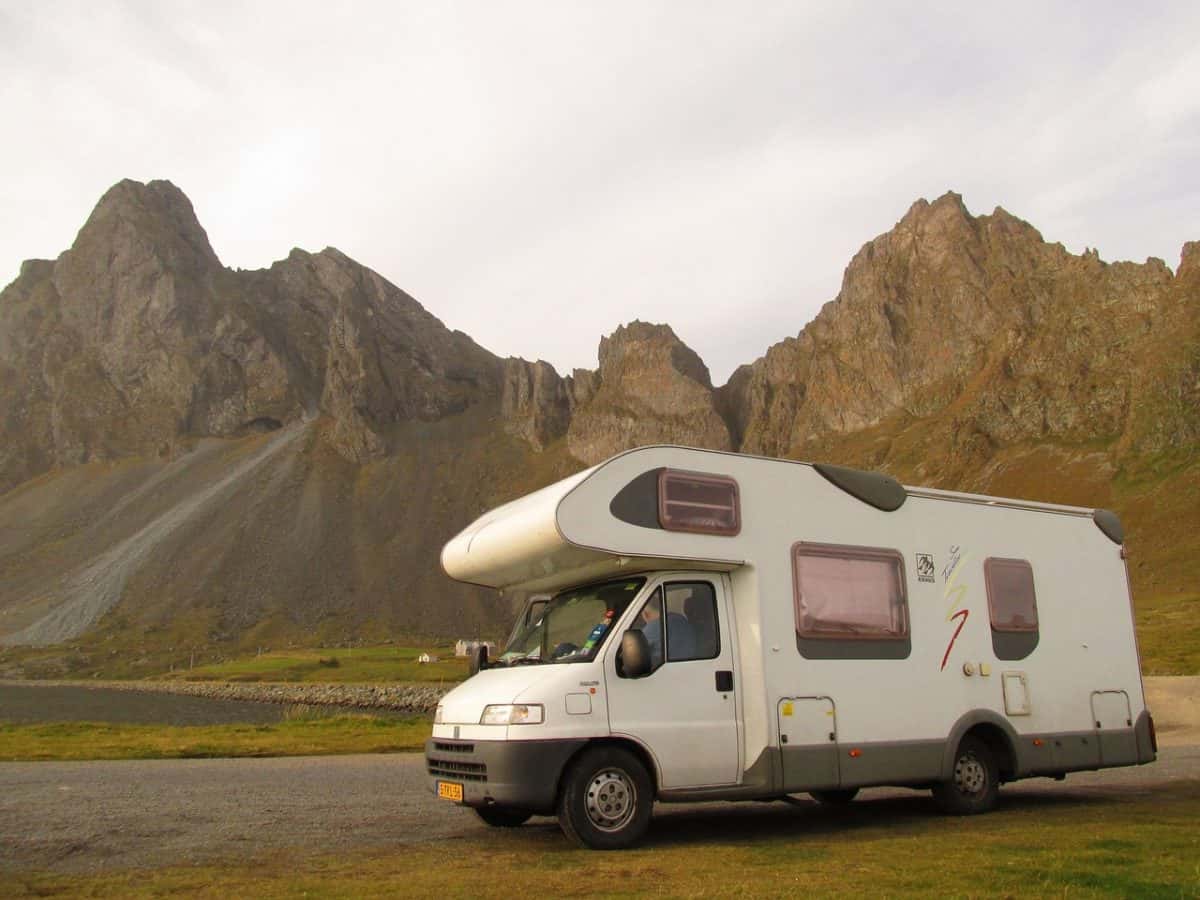
Renting a campervan in Iceland may be a wise decision if you fancy seeing the most you can of the country during your trip. It may also be a more sensible way to travel when you have children, as it generally means less walking and waiting around – they can also enjoy indoor games during the journeys, making use of that large heated space.
If you opt for a camper van, make sure it’s 4×4 in case you need or want to travel on an F road. Whilst these unpaved roads are not very safe, your insurance will not cover you unless it is a 4×4 and you’re using it when the road is open (during summer). Camper rentals will likely set you back just over $100 per day, but you will save costs regarding cooking and other modes of transport.
Tent camping may be cheaper, but Iceland is an expensive country and ultimately, having a campervan makes it easier to budget for. Car camping is another alternative, but you may want a tent in case you find sleeping in the car is not comfortable enough. Having a whole family along with you makes this even more difficult.
Tent camping is perhaps the cheapest, but is the messiest. You will be more exposed to rain (Iceland’s weather is notoriously fast-changing and impossible to predict). It’s not necessarily as cold as you imagine, but it’s certainly no walk in the park. Winds can get extreme, and you need to be prepared for it. Campfires are absolutely illegal in Iceland, so you cannot rely on this to keep you warm.
Campsites will have showers and electricity available, but it will cost you. On the other hand, most campers will usually have this built in.
When camping on a campsite, you can rent a towel for a few US dollars (equivalent). It’s worth taking coins for the showers, in case this is how they’re paid for. You will need more protection when tent camping, and of course will need a suitable tent, sleeping mat, sleeping bag and so on.
Because of the extreme weather, you need to take a lot of thick clothing. This is difficult as a large family, which is why campervans are preferred choice. With these, you can store more items, so you can afford to pack luxuries like hot water bottles.
Either way, it’s worth packing some food. Camping in Iceland can be spontaneous and produce moments of adversity, so having a backup of food and basic survival gear (and first aid kit) is important.
According to the Environmental Agency of Iceland:
“Camping with no more than three tents is allowed on uncultivated ground for a single night, unless the landowner has posted a notice to the contrary. However, campers should always use designated campsites where they do exist. Do not camp close to farms without permission. If a group of more than three tents is involved, these campers must seek permission from the landowner before setting up camp outside marked campsite areas.”
There are some more laws around camping in a campervan outside designated places, however, so be more careful when it comes to parking up for the night. Many campervan tourists still like to take a tent and get out there in the wild to experience nature more closely.
There are an abundance of things to see in Iceland. So many, in fact, that you have the freedom to handpick the ones that are more suited to taking a whole family.
Golden Circle
There are plenty of family activities in Iceland, so let’s start with the basics. Visiting the Golden Circle is an incredible experience for all ages. Not only is there interesting sciences at play with the geothermal geysers, but the eruptions make them exciting for young children. The Golden Circle isn’t too far from Reykjavík City, which is likely where you arrived by plane.
Hot springs
Iceland is known for its geothermal water and hot springs – they are dotted around the country. It’s a great choice for a family, because they are usually partnered with breathtaking views and even water-slides for the children. These are a great way for a family to wind down after a long hike nearby.
Animals
Adults love animals almost as much as kids do – and Iceland has plenty. Iceland has very few (if any) deadly animals, which makes animal watching all the more family-friendly. A whale watching tour will allow you to see the incomprehensibly large Whales and dolphins play in the ocean.